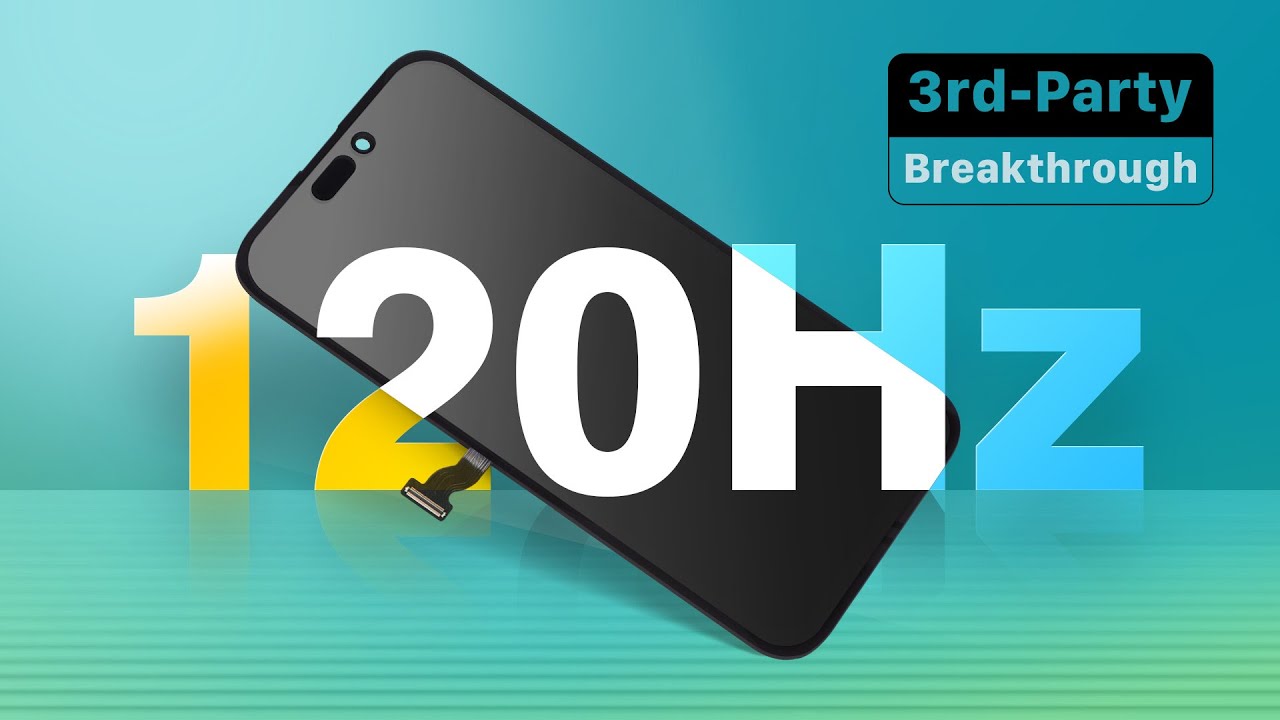Third-Party Screens: The Breakthrough of 120Hz Technology

In recent years, high-refresh-rate displays have transformed how we experience visuals on our devices. Apple pioneered this with its 120Hz ProMotion display in the iPhone 13 Pro, setting an industry standard that users expect. Today, the aftermarket has joined the fray, offering 120Hz replacement screens for iPhones. This allows users to enjoy smoother visuals without compromising on quality. But what does this mean for your viewing experience? Let's dive into the details of this exciting development.
Understanding Refresh Rates
Refresh rate, measured in hertz (Hz), indicates the number of frames a screen can display per second. A 60Hz screen displays 60 frames per second, while a 120Hz screen displays 120 frames per second. Higher refresh rates result in smoother, more fluid motion, which is especially advantageous for fast-paced video games and action movies. However, for static content, a high refresh rate may consume unnecessary power without a noticeable improvement in image quality.

Variable Refresh Rate Technology
To optimize performance, REPART's updated screens incorporate Variable Refresh Rate (VRR) technology. This innovation adjusts the refresh rate based on the displayed content, utilizing 120Hz for dynamic visuals and dropping to 10Hz for static images. This balance between fluid motion and energy consumption is a game changer.

Screen Advancements: Display Driver IC (DDIC)
The display heart, known as the Display Driver IC (DDIC), has undergone significant enhancements. These improvements include:
- Processor with Faster Clock Speeds: The DDIC now operates with a multi-core architecture, allowing simultaneous electron deliveries and smoother updates.
- Increased Memory Bandwidth: Enhanced memory bandwidth allows more electrons to be processed per trip, ensuring seamless 120Hz performance.
- Protocol Upgrade: Upgrading MIPI DSI 1.1 to eDP 1.5 enhances synchronization capabilities.

Display Panel Upgrade: From LTPS to LTPO
The switch from LTPS to LTPO technology marks a significant upgrade. This change improves energy efficiency and ensures smoother transitions across varying refresh rates. Here’s a simplified analogy:
Imagine a water tank where water flows in quickly (high electron mobility) but also leaks out just as fast (capacitor leakage). This requires a continuous and strong water flow (higher voltage) to maintain the water level, ensuring brightness and high refresh rates.
When attempting to display at low refresh rates, the water tank drains quickly, failing to support stable image output, leading to screen flickering due to unstable water flow.
Now, imagine an upgraded water tank that combines the fast inflow of LTPS with the slow leakage of IGZO. This upgraded tank fills quickly and leaks slowly, maintaining a stable water flow. This allows for a flicker-free, stable display even at low refresh rates.
Key Benefits of LTPO Technology
- Dynamic Refresh Rates: LTPO displays can adjust their refresh rates from as low as 1 Hz for static images up to 120 Hz for dynamic content. This adaptability not only enhances user experience but also conserves battery life by minimizing power usage during less demanding tasks
- Improved Energy Efficiency: By reducing the need for high voltages and allowing for lower refresh rates when appropriate, LTPO technology significantly lowers overall energy consumption compared to traditional LTPS displays

Enhanced Display Quality: The combination of LTPS and IGZO technologies allows for better consistency in pixel performance, particularly at low brightness levels. This mitigates issues such as color shifting and uneven brightness that are often associated with LTPS displays.
Performance Comparison: REPART 120Hz Screen vs. OEM and 60Hz Displays
When comparing the REPART 120Hz screen with both OEM and typical 60Hz displays, the differences are stark:
- Swiping through pages is instant and fluid with the REPART screen, while the 60Hz display hesitates.
- Opening and minimizing apps is quick and responsive on the REPART screen, whereas the 60Hz version struggles with stuttering.
- Playing 120FPS videos on the REPART screen is smooth and clear, while the 60Hz display suffers from ghosting and blurring.

Conclusion
The advent of third-party 120Hz screens, such as those from REPART, marks a significant leap forward in smartphone display technology. With VRR technology ensuring optimal performance and energy efficiency, users can enjoy smoother visuals, whether gaming, watching videos, or simply scrolling through content. Once you experience the fluidity of a 120Hz display, returning to a 60Hz screen will feel like a significant downgrade. For those looking to upgrade their iPhones with high-quality replacement screens, REPART's 120Hz screen replacement offers a fantastic solution.
-
Posted in
120hz screen, screen replacement




